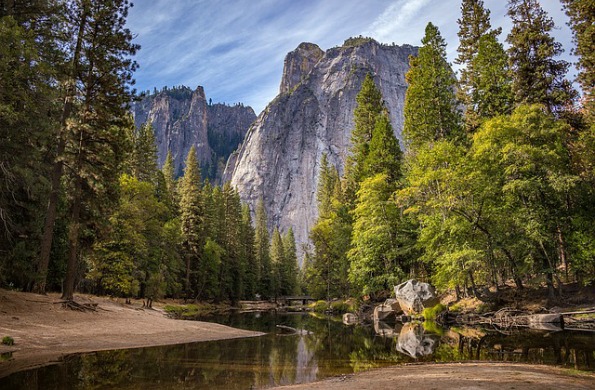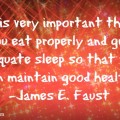**Disclaimer** While the word of wisdom gives us basic guidelines for health, it leaves the interpretation of those guideline up to the individual members. This blog is not intended to replace your medical professional or the divine revelation of the Word of Wisdom, but rather it is practical knowledge that I have accumulated over the years in my own pursuit of a healthier lifestyle which I am passing along in the hopes that it will benefit others.**
Our health relies on our lifestyle and our environment. If we make unhealthy choices we cannot expect to have good health. Likewise, if we live in a toxic environment, whether it is mentally or physically toxic, we will be adversely affected.
During the summer months many of us like to work out in our yards, whether it is planting a flower garden, maintaining the lawn, shrubs, and other landscaping, or growing our own foods. Being outdoors is very beneficial, for the fresh air, sunshine, and physical exercise it promotes. But are we careful about how we affect the environment around us when we are working and playing out of doors?
The use of synthetic fertilizers and pesticides are one of the biggest concerns for those of us who are trying to maintain our health and minimize disease, because what we use in our yards and gardens affects every other living thing around us as well.
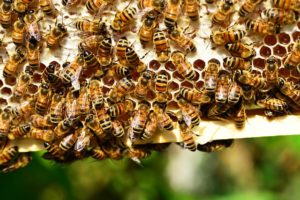 There are many connections in the natural world, and nothing that we do is done in a vacuum. A perfect example of this is in the Bee populations around the world.
There are many connections in the natural world, and nothing that we do is done in a vacuum. A perfect example of this is in the Bee populations around the world.
A Bee only lives for about 60 days. In that time they learn to communicate with others in their hive. Honeybees develop a sophisticated means for locating pollen, and for finding their way back to the hive after finding it. They learn hive keeping skills, feed and care for the young, and make honey.
While many kinds of bees work as pollinators, only the honeybee produces food that can be consumed by humans.
Many people have become concerned about the populations of honeybees over the years and with good reason. Bees not only produce honey, which is a very beneficial food for people, they also pollinate the plants and trees that grow many of the foods we eat. Without them it would be very difficult to produce the quantity of food needed to sustain the world’s populations.
While this is a concern, there are things that even the average person can do to help minimize our impact on the environment and the other living things around us that also rely on clean air, water, and soil to survive.
- Avoid the use of pesticides whenever possible. They aren’t good for you, and they aren’t good for the environment. Look into natural pest control methods instead. But if you must use them, be careful where you spray. Confine it to the problem area only, and try not to get pesticides on dandelions and clover as these are favorite pollen sources for bees. My kids, and the local rabbits, loved having those yellow and white flowers in our yard, but if it’s not your thing there are other ways to deal with them.
- Buy non GMO and organic produce whenever possible to not only protect yourselves and you family from these chemically laden foods, but to encourage farmers to use sustainable crops and better methods of cultivation that are more environmentally friendly as well.
- Buy your produce, during the growing season, from the local farmers who use minimal synthetic pest control. Talk to the owners of the local “pick your own orchards” as well as farmers who come to the open markets to sell their produce. Find out what their practices are for controlling pests on their crops.
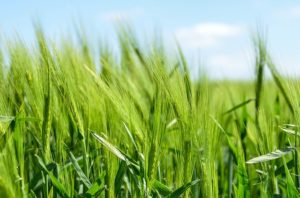 There are other methods of pest control, other than using chemical pesticides, which are becoming more widely used. At Weaver’s Orchard in Berks County PA they use what they call an Integrated Pest Management system. With this system they seek only to control, not obliterate the pests.
There are other methods of pest control, other than using chemical pesticides, which are becoming more widely used. At Weaver’s Orchard in Berks County PA they use what they call an Integrated Pest Management system. With this system they seek only to control, not obliterate the pests.
One of these methods consists of disrupting the mating of the pests so that fewer of them are produced resulting in less crop damage. This is done by tying special twist ties to the trees. These special ties have a species-specific pheromone, or scent, that will confuse that particular pest and disrupts their mating. This can also be accomplished by installing devices called puffers on top of tall poles in strategic places throughout the orchard. These are programmed to release the scent of the pest during mating season filling the area with the scent and effectively confusing them so that fewer of them are able to mate and produce offspring.
So how do they know when they need to use the puffers or other means to control the local pests? They use a pest box which has a sticky substance inside. These are placed around the orchard, and when they begin to trap the pests in significant numbers that is their signal to take appropriate action. This way they control the pests and produce beautiful fruit without doing more than what is really necessary.
Part of the reason for this controlled response is that responsible farmers and orchard growers don’t want to harm beneficial insects like honeybees that pollinate their trees and other plants. Using chemical pesticides kills all insects in the affected area, not just the ones that destroy crops. This natural method is a better option because it controls the pests, it doesn’t kill them, keeping things in balance while ensuring their best chance for a good harvest.
Insects that pollinate our plants are crucial to the environmental ecosystem, but honeybees even more than most. A large proportion of the world’s food plants are pollinated by bees. According to the UN Food and Agriculture Organization more the two thirds of the most widely consumed crops across the globe rely on bees for pollination.
Food crops like blueberries and cherries are 90-percent dependent on honeybees, while almonds depend entirely on the honeybee for pollination.
Research from North Carolina State University found that plants produced larger fruit when they were pollinated by a variety of bees, not just honeybees. This makes it even more important that we take protecting our bee populations seriously. Bee colonies have been dwindling in recent years due to the increased use of insecticides, as well as loss of their natural habitats, but we can all do our part to change those statistics.
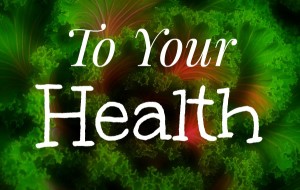
To read more of Denise’s articles, click here.
Honeybees as well as native bees like bumblebees, and wood bees tend to work well together, but the practice of applying pesticides to large fields of crops like corn and soybean are killing entire bee colonies, leaving us facing a serious situation in the future if things don’t change.
We as consumers depend a great deal on insects like bees to keep our food supply sustainable, and it is in our own best interest, from more than one point of view, to do everything we can to minimize the use of anything that isn’t natural that could be a threat to them, and to us.
References:
http://rodaleinstitute.org/our-work/honeybee-conservancy/honeybee-facts/
https://www.weaversorchard.com/pest-populations-pheromones/
http://rodaleinstitute.org/our-work/honeybee-conservancy/
http://www.foodsafetynews.com/2011/11/tests-show-most-store-honey-isnt-honey/#.V2WE3xJW4Zw
About Denise Mastrocola
Denise is a Michigander turned Pennsylvanian, who has been writing stories since Elementary School. Denise won an award at the annual Lansing Youth Talent Show, when she was in 10th grade, for a short story entitled Procrastination is Fatal, but didn’t decide on writing as a career until she was 28 years old. While homeschooling her older children she spent 4 years working through a course from The Institute of Children’s Literature.
Through the years Denise’s children have had a variety of health issues, many of which have been linked to various sensitives; having spent more than 20 years researching and trying different things Denise has a boots on the ground view on healthier living.
Denise currently writes for 2 blogs and has several books in different stages of completion. She is planning to break ground in e publishing, and hopes to have her first Historical Fantasy book which is set during the renaissance, “Lisa, My Lisa?” ready by the first of the year.
Twitter •

